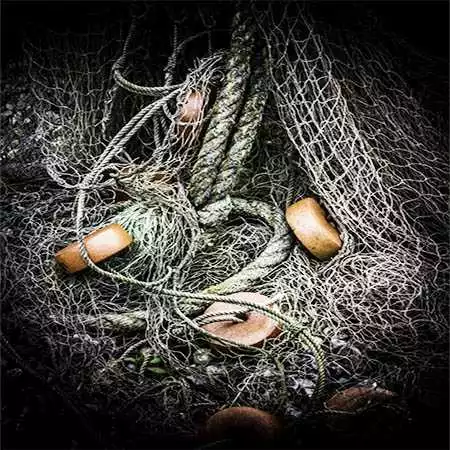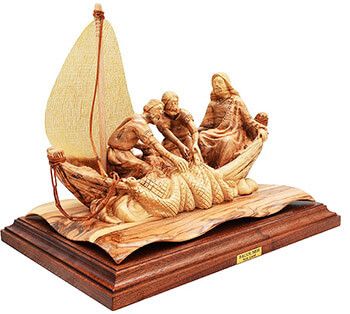The Parable of the Net

Among the proverbial wisdom of the Bible, Jesus’ parables are celebrated for their tact, meaning, and provoking message. The Parable of the Net (Matthew 13:47-50) is one of the most puzzling of Jesus’ short stories. It appears to be an apocalyptic metaphor (or a mashal: allegory) rather than a full short story. More questions result from this allegory rather than answers. The Parable of the Net is not structured like a typical parable told in the first century, because it appears that the mashal and the nimshal (lesson) are both closely told together. With its odd themes, structure, and lack of defined meaning, the Parable of the Net is difficult to interpret without the use of other Old Testament prophetic books and theology, or other New Testament parables and themes. The Parable of the Net is apocalyptic in nature, yet purposefully connected with other parables in Matthew 13 to create a mosaic of meaning about the Kingdom of God.
During the First Century, it would not have been uncommon for a rabbi to be teaching about the apocalypse, or the day when God would free Israel from her overlords and usher in a new political age through a messianic savior.
It can be argued, however, that the tradition of apocalyptic literature distinctly represents Christian thoughts and ideas. If this were entirely true, the War Scroll would not have found its place among the Dead Sea scrolls in a Jewish sect. Even if the origin of apocalyptic literature can never be determined, this evidence shows that Jesus affected Jewish thoughts and ideas dramatically enough for apocalyptic literature to change as a result.
The Parable of the Net: Analysis
Question 1: Why is it important that a dragnet is used as an example in this parable?
The Parable of the Net begins with imagery that would be common to everyday life in the first century. In Jesus’ audience are likely fishermen who would have understood the process of fishing even more than the average person. These people would have understood the deeper messages behind Jesus’ allegory, such as the kind of net used and which fish to keep and which to throw away. Furthermore, there were also cultural hints that carry a deeper understanding for a Jew living in the First Century around Galilee. By referencing good and bad fish, Jesus was alluding to Levitical purity laws about which fish was clean and which was not. The Jews of the First Century would have understood this well – that a tilapia was a clean fish and a catfish was not. These were deeper allusions that the modern reader must seek to understand, since it was an obvious undertone that the rest of the First Century community of Galilee would know without explanation.
The kind of net that Jesus references is called a seine, which has carved stone weights at the bottom and cork to hold the top of the net to the water’s surface. The seine also has two very long ropes which would be used to pull it into shore. It would catch all sorts of fish, both large and small. A dragnet (purse-seine) was a powerful tool for fishermen in ancient Galilee. The seine required teamwork to drag into shore, but the catch it brought was usually very large. The fishermen would sail to a port (likely on the north shore) of Galilee and let down one side of the net on shore, while other fishermen would sail out, lay the net in the water, and return to shore to pull the net in with their colleagues. The net was let down in this way to catch groupings of fish quickly, therefore bringing a larger catch.
The dragnet is also called a purse-seine because when it was laid in the water, it would take the shape of a rounded bag (likely a coin purse filling with change – i.e. fish; see Appendix 1). At the multiple ports on the Sea of Galilee, it is more than likely that Jesus experienced a dragnet first hand: felt its weight, understood the manpower needed to drag it in, and saw the reward that would come from it after so much labor. From His disciples, we know that Jesus was close to the fishermen of Galilee, whether socially or personally. Jesus knew exactly what he was talking about as he referenced the purse-seine in His parable.
Question 2: What does gathering in a net signify?
In his book The Sea of Galilee and its Fishermen: in the New Testament, author Mendel Nun works through the Parable of the Net in practical terms. He admits that in Jesus’ telling of the parable that his use of a dragnet for an example is correct – the dragnet is used exactly how Jesus said it would be used. However, there is one problem with Jesus’ description. The dragnet was thrown into the water and spread with the intention of immediately pulling the net into shore. Jesus describes this fishing process as if the net were spread in the water while the fishermen waited for the “perfect” time to drag the net in. The method Jesus describes would surely scare off more fish rather than it could catch. If the net were left to dry, it would be on shore, and not in a boat. However, the significance of the waiting period appears to be an apocalyptic reference.
The fact that Jesus chose the purse-seine net to illustrate his parable shows that he was very intentional about the imagery. As mentioned previously, the net takes the shape of a rounded bag in water. Jesus could want this net to signify a kind of in-gathering – a “round-up” of sorts, that would corral all people from all nations, tribes, and tongues to the Throne of God for judgement at the completion of the age. This is the most probable of ideas.



Leave a Reply
You must be logged in to post a comment.